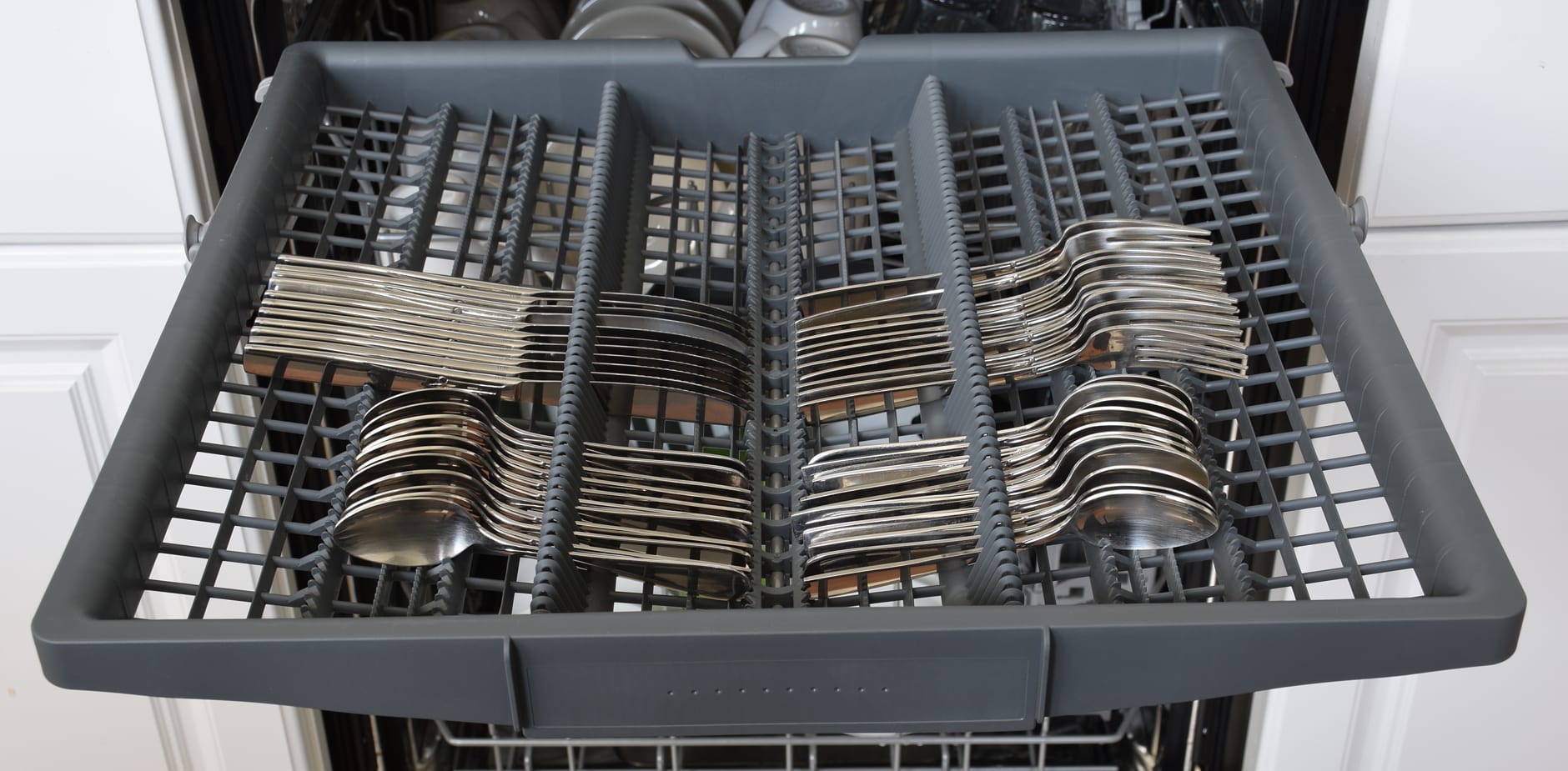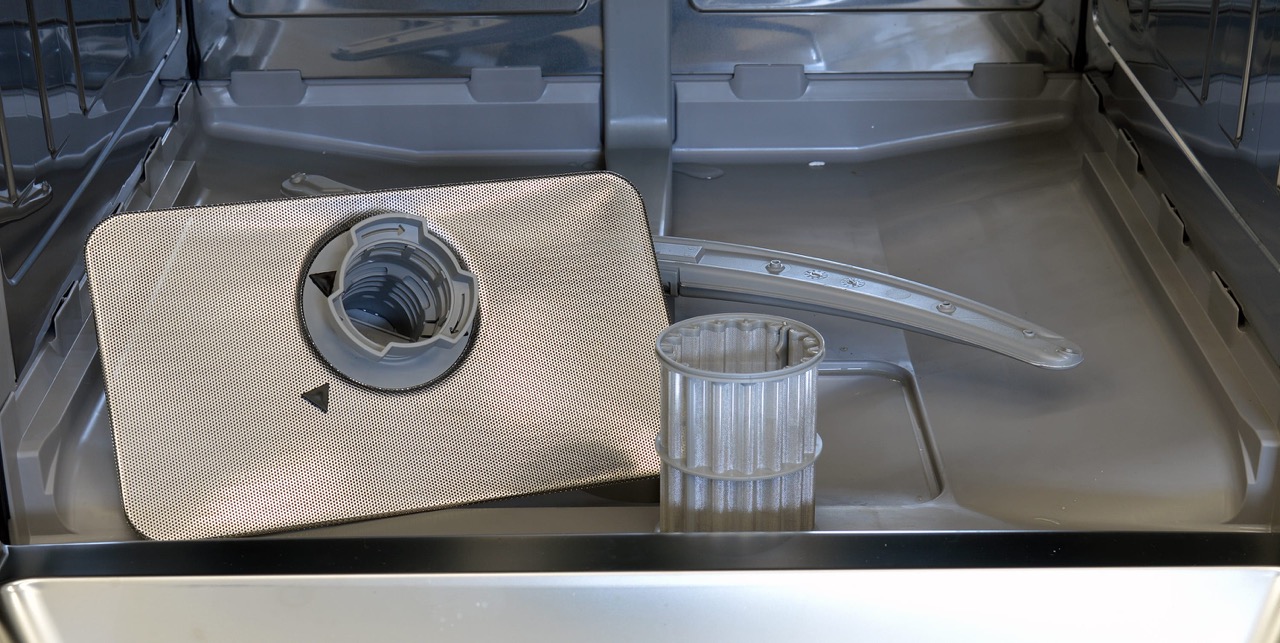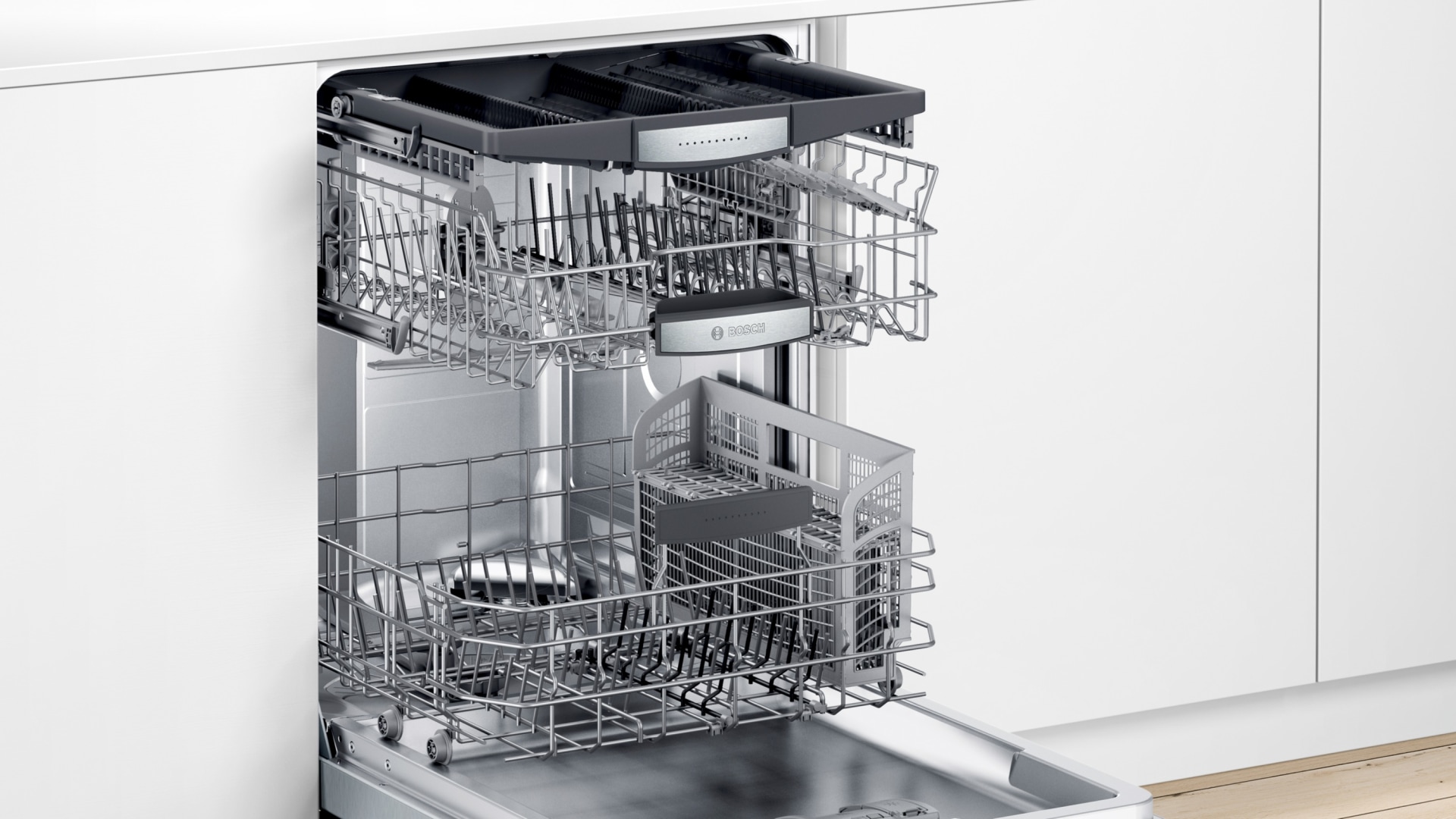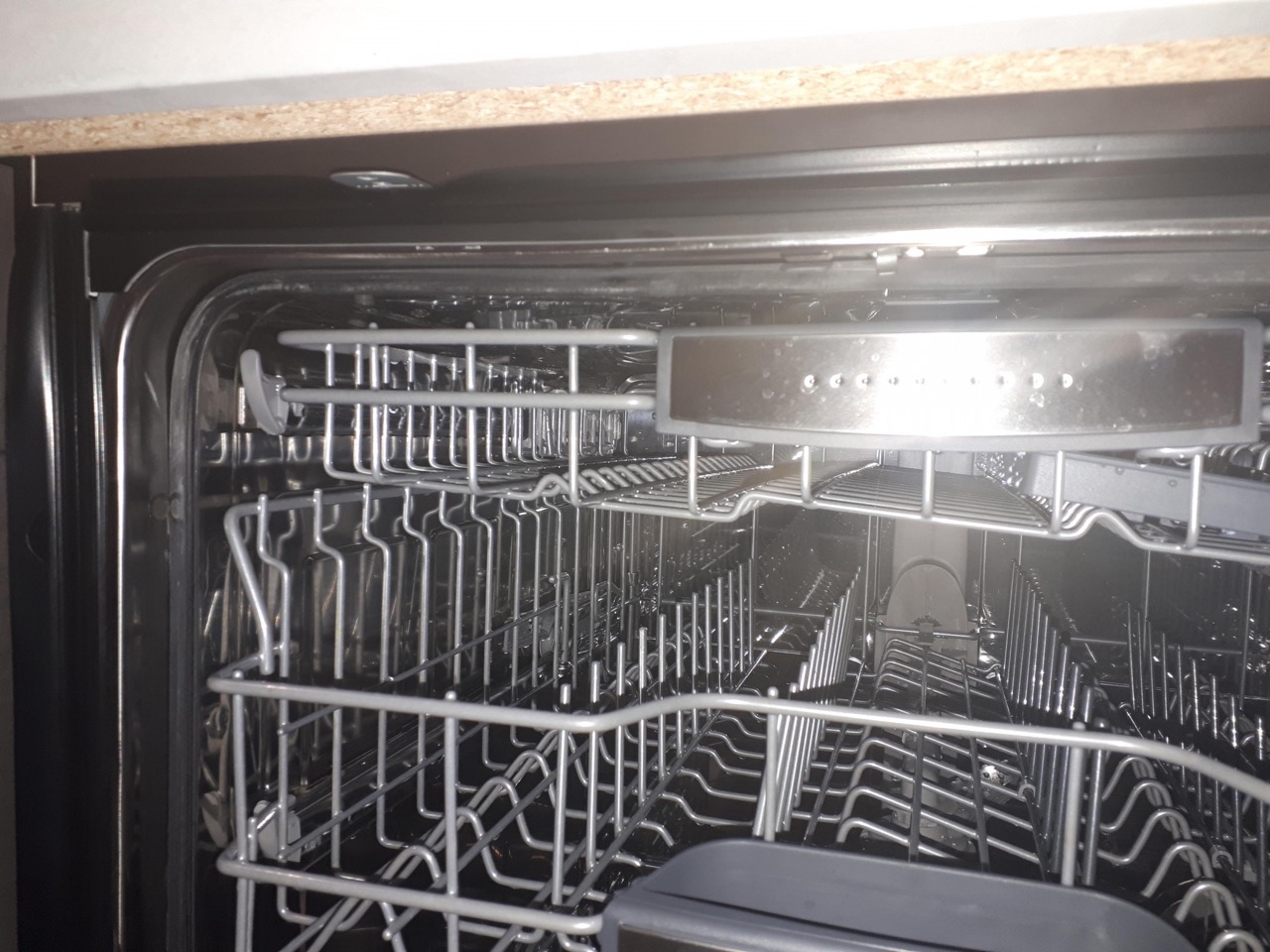

Articles
How To Load A Bosch Dishwasher
Modified: January 18, 2024
Learn how to load a Bosch dishwasher efficiently with these helpful articles. Find tips and tricks to maximize space and ensure sparkling clean dishes every time.
(Many of the links in this article redirect to a specific reviewed product. Your purchase of these products through affiliate links helps to generate commission for Storables.com, at no extra cost. Learn more)
Introduction
Welcome to our guide on how to load a Bosch dishwasher! Bosch is renowned for their high-quality and efficient dishwashers that make our lives easier and keep our dishes sparkling clean. Loading a Bosch dishwasher correctly is key to ensuring optimal performance and maintaining the longevity of the appliance.
In this article, we will walk you through the step-by-step process of loading a Bosch dishwasher, from preparing the dishwasher to selecting the cycle and starting the wash. We will also provide some helpful tips to make the most of your dishwasher’s capacity and achieve the best results.
So, whether you’re a new Bosch dishwasher owner or simply looking to improve your dishwashing routine, let’s dive in and learn how to load your Bosch dishwasher like a pro!
Key Takeaways:
- Proper loading of a Bosch dishwasher involves preparing the appliance, strategically loading the racks, adding detergent, selecting the right cycle, and starting the dishwasher for efficient and sparkling clean results.
- To optimize a Bosch dishwasher’s capacity, avoid overloading, strategically position dishes, utilize customizable features, and ensure that the spray arm remains unobstructed for thorough and effective cleaning.
Read more: How To Load Silverware In A Bosch Dishwasher
Prepare the Dishwasher
Before starting to load your Bosch dishwasher, it’s important to ensure that it is clean and ready for use. Here are a few steps to help you prepare the dishwasher for your load of dishes:
1. Check and clean the filter
The filter is an essential component of your dishwasher that traps food particles and debris to prevent them from clogging the drain. Start by locating the filter, usually located at the bottom of the dishwasher. Remove the filter and rinse it under running water to remove any residue. Inspect the filter for any stubborn grime and gently scrub it with a soft brush if needed.
2. Clean the interior
Wipe down the interior of the dishwasher with a sponge or cloth. Pay attention to the walls, the door, and any other surfaces that may have accumulated dirt or food particles. Use a mild detergent if necessary. Make sure the spray arms are clean and free from any obstructions that could hinder water flow.
3. Check the spray arms
Inspect the spray arms to ensure that the nozzles are clear and unclogged. If you notice any build-up or blockage, use a toothpick or a small brush to remove the debris. This will help to ensure that the water is distributed evenly throughout the dishwasher during the wash cycle.
Read more: How To Load The Dishwasher
4. Empty the dishwasher of any previous items
Before loading your dishes, make sure to remove any dishes or utensils that may still be in the dishwasher from a previous cycle. This will prevent any cross-contamination and ensure that your dishwasher is ready for your new load of dirty dishes.
By taking these simple steps to prepare your Bosch dishwasher, you can ensure optimal performance and cleanliness for your next load of dishes. Now that your dishwasher is ready, let’s move on to the next step: loading the bottom rack.
Load the Bottom Rack
The bottom rack of your Bosch dishwasher is designed to hold larger and heavier items such as pots, pans, and larger bowls. Properly loading the bottom rack will ensure efficient cleaning and avoid any potential damage to delicate dishes. Here’s how to load the bottom rack:
1. Place larger items on the sides
Start by placing larger items such as pots and pans on the sides of the bottom rack. This will allow for proper water circulation and ensure that the smaller items in the center receive adequate water coverage during the wash cycle.
2. Position bowls and plates in between the prongs
Next, place bowls and plates in between the prongs of the rack. Make sure to position them at an angle to allow for water flow and ensure thorough cleaning. Avoid overcrowding the dishes, as this can prevent proper water circulation and result in poorly cleaned items.
Read more: How To Start A Bosch Dishwasher
3. Load utensils in the silverware basket
If your Bosch dishwasher comes with a silverware basket, load it with utensils such as forks, spoons, and knives. Be sure to separate them to prevent them from nesting together, which can hinder the cleaning process. Place sharp knives with the handles facing up to avoid any potential accidents when unloading.
4. Secure delicate items in place
If you have any delicate items such as wine glasses or fine china, make sure to position them securely in the prongs of the bottom rack. Avoid placing them too close together to prevent any potential breakage during the wash cycle.
5. Check for proper loading height
Before closing the dishwasher door, ensure that the items in the bottom rack do not interfere with the spray arm or upper rack when the dishwasher is in operation. Adjust the height of the prongs if needed to accommodate larger items.
By following these steps, you can effectively load the bottom rack of your Bosch dishwasher, ensuring efficient cleaning and protecting your dishes. Now let’s move on to the next step: loading the upper rack.
Load the Upper Rack
The upper rack of your Bosch dishwasher is designed to hold smaller and more delicate items such as glasses, mugs, and smaller plates. Properly loading the upper rack will help prevent damage to these items and ensure they are thoroughly cleaned. Here’s how to load the upper rack:
Read more: How To Reset A Bosch Dishwasher
1. Place glasses and mugs securely
Start by placing glasses and mugs on the prongs of the upper rack. Make sure to position them securely to prevent any tipping or breakage during the wash cycle. If you have stemware, use the designated stemware holders or position them between the prongs to avoid any potential damage.
2. Load smaller plates and bowls
Next, place smaller plates and bowls on the upper rack. These items can be loaded in between the prongs or positioned securely on top of the prongs. Make sure to leave enough space between the items for water to circulate for thorough cleaning.
3. Arrange larger plates and platters on the sides
If you have larger plates or platters that don’t fit in the bottom rack, you can place them on the sides of the upper rack. Make sure to position them securely to prevent any movement during the wash cycle.
4. Secure small and lightweight items
If you have small and lightweight items such as lids, measuring spoons, or baby bottle accessories, place them in the designated compartments or secure them in the cutlery basket. This will prevent them from falling and potentially blocking the spray arm or getting damaged during the wash cycle.
Read more: How To Drain A Bosch Dishwasher
5. Check loading height and clearance
Before closing the dishwasher door, make sure that the items in the upper rack do not interfere with the spray arm or the dishes in the bottom rack. Adjust the height of the prongs if necessary to accommodate taller items.
By properly loading the upper rack of your Bosch dishwasher, you can ensure that your smaller and more delicate items are cleaned effectively without any damage. Now let’s move on to the next step: loading the silverware basket.
Load the Silverware Basket
The silverware basket in your Bosch dishwasher is specifically designed to hold your utensils and ensure they are thoroughly cleaned. Properly loading the silverware basket will help prevent utensils from nesting together and allow for optimum cleaning. Here’s how to load the silverware basket:
1. Separate the utensils
Start by separating your utensils to ensure proper cleaning. Place forks, spoons, and knives in separate compartments so they don’t nest together. This will ensure that water can reach each utensil and remove any food particles or residue.
2. Position larger utensils properly
If you have larger utensils such as serving spoons or tongs, place them in the designated sections of the silverware basket. Make sure they are positioned in a way that allows water to reach all parts of the utensils for thorough cleaning.
Read more: How To Clean A Bosch Dishwasher
3. Face knives with caution
When loading knives into the silverware basket, always place them with the handle side down and the blade side up. This prevents any potential accidents when unloading the dishwasher and ensures safe handling of the knives.
4. Utilize the vertical slots
If your silverware basket has vertical slots, you can use them to hold utensils such as chopsticks or thin straws. This helps to keep them organized and prevents them from falling through the basket during the wash cycle.
5. Avoid overloading the basket
While it may be tempting to squeeze in as many utensils as possible, it’s important to avoid overloading the silverware basket. This allows for proper water circulation and ensures that each utensil receives an adequate amount of water for effective cleaning.
By following these steps, you can properly load the silverware basket in your Bosch dishwasher and ensure that your utensils come out clean and sparkling. Now, let’s move on to the next step: adding detergent to the dishwasher.
Add Detergent
Adding detergent to your Bosch dishwasher is essential for achieving clean and spotless dishes. Choosing the right detergent and using the correct amount will help ensure optimal cleaning performance. Here’s how to add detergent to your Bosch dishwasher:
Read more: How To Load A Samsung Dishwasher
1. Choose the right detergent
It’s important to select a dishwasher detergent that is specifically formulated for use in automatic dishwashers. Look for detergents that are labeled as suitable for use in Bosch dishwashers to ensure compatibility and best results. You can choose between powder, liquid, or tablet form, depending on your personal preference.
2. Determine the correct amount
Refer to the detergent packaging or your Bosch dishwasher manual to determine the recommended amount of detergent for your dishwasher. This can vary based on the hardness of your water, the soil level on your dishes, and the size of your load. It’s important not to exceed the recommended amount, as this can result in excessive suds and poor cleaning performance.
3. Add detergent to the dispenser
Locate the detergent dispenser in your Bosch dishwasher. It is typically located on the inside of the dishwasher door. Open the dispenser lid and carefully pour in the appropriate amount of detergent according to the package instructions. Close the lid securely to ensure that the detergent is dispensed at the right time during the wash cycle.
4. Consider using additional rinse aid
Rinse aid is an optional additive that can be used to enhance drying performance and prevent water spots on your dishes. If desired, add rinse aid to the designated compartment in your Bosch dishwasher. Follow the instructions on the rinse aid packaging for the correct amount and refill as needed.
Read more: How To Load A Whirlpool Dishwasher
5. Avoid pre-rinsing
One of the benefits of using a Bosch dishwasher is its ability to tackle dirty dishes without the need for pre-rinsing. Modern dishwashers are designed to remove even tough food residue, so there’s no need to rinse your dishes before loading them. Simply scrape off excess food scraps into the trash and load your dishes directly into the dishwasher.
By following these steps and adding the right amount of detergent to your Bosch dishwasher, you can ensure optimal cleaning performance and achieve sparkling clean dishes. Now, let’s move on to the next step: selecting the dishwashing cycle.
Select the Dishwashing Cycle
Choosing the right dishwashing cycle for your Bosch dishwasher is crucial for achieving the best results based on the level of soil on your dishes and the type of items you’re washing. Bosch dishwashers offer a variety of cycle options to suit different needs. Here’s how to select the dishwashing cycle:
1. Assess the soil level
Before selecting the cycle, assess the soil level on your dishes. If your dishes have light to moderate food residue or are lightly soiled, you may opt for a shorter and less intensive cycle. For heavily soiled dishes, or items with dried-on food, a longer and more intense cycle may be necessary.
2. Consider the type of items being washed
Take into account the type of items you’re washing. Some cycles are specifically designed for delicate items such as glassware or fine china, while others are more suitable for heavily soiled pots and pans. Check the Bosch dishwasher manual or the control panel on your dishwasher for specific cycle descriptions to help you choose the appropriate one.
Read also: 10 Amazing Bosch Dishwasher Parts for 2024
3. Select the cycle
Once you have assessed the soil level and identified the type of items being washed, it’s time to select the cycle. On most Bosch dishwashers, the cycles are typically listed on the control panel. The options may include “Auto,” “Normal,” “Heavy,” “Express,” “Gentle,” and more. Use the arrow buttons or the knob to scroll through the available cycles and stop at the desired one.
4. Customize options if needed
Depending on the specific Bosch dishwasher model, you might have the option to customize certain settings within the selected cycle, such as temperature, additional drying options, or delay start. Refer to your dishwasher’s manual for instructions on how to customize these options according to your preferences.
5. Start the dishwasher
Once you have selected the desired cycle and customized options if needed, it’s time to start the dishwasher. Press the designated start button on the control panel, and your Bosch dishwasher will begin the selected cycle, providing you with clean and spotless dishes.
By following these steps and selecting the appropriate dishwashing cycle for your Bosch dishwasher, you can ensure efficient cleaning and optimal performance. Now, let’s move on to the next step: starting the dishwasher.
Start the Dishwasher
Now that you have prepared and loaded your Bosch dishwasher, selected the appropriate cycle, and added detergent, it’s time to start the dishwasher. Starting your Bosch dishwasher is a simple process, and here’s how to do it:
Read also: 11 Best Dishwasher Bosch for 2024
1. Close the dishwasher door
Ensure that all items are securely loaded and positioned correctly in the dishwasher racks. Close the dishwasher door firmly until you hear a click or feel that it has latched properly. This is an important step to ensure that the dishwasher operates correctly and effectively.
2. Select any additional options
If your Bosch dishwasher offers additional options or settings, such as the delay start feature or extra drying, you can customize these settings before starting the dishwasher. Refer to the dishwasher’s manual for instructions on how to utilize these options if desired.
3. Press the start button
Locate the start button on the control panel of your Bosch dishwasher. Depending on the model, the start button may be labeled as “Start,” “On/Off,” or have a symbol indicating “Start.” Press the button to initiate the dishwasher’s operation, and you should see the indicator light confirming that the cycle has started.
4. Monitor the dishwasher’s progress
Once the dishwasher has started, you can monitor the progress of the wash cycle via the control panel display or by observing the light indicators. This will give you an idea of how much time is remaining until the cycle is complete.
Read also: 12 Best Bosch Dishwasher Wheels for 2024
5. Wait for the dishwasher to complete the cycle
Allow the Bosch dishwasher to run its full cycle without interruption. The length of the cycle will vary depending on the selected program, dishwasher model, and any additional settings you have chosen. Typically, a dishwasher cycle can range from 60 minutes for a quick wash to over 2 hours for heavily soiled loads or intensive cleaning programs.
By following these steps, you can easily start your Bosch dishwasher and let it work its magic. Avoid opening the door mid-cycle as this can disrupt the wash process and impact the cleaning results. Now, let’s move on to the next section: tips for optimal loading.
Tips for Optimal Loading
Loading your Bosch dishwasher is not only about placing dishes inside; it’s also about maximizing the dishwasher’s capacity and ensuring thorough cleaning. Here are some tips to help you achieve optimal loading:
1. Arrange dishes strategically
Place items strategically in the dishwasher to ensure water can reach all surfaces. Position dishes so that they face inward towards the spray arm, allowing the water to reach all sides of the dishes for effective cleaning.
2. Avoid overloading
While it can be tempting to squeeze in more dishes, overloading can hinder water circulation and compromise cleaning performance. Leave enough space between items for water and detergent to reach every dish. This will help prevent spots, residue, and uncleaned areas on your dishes.
Read also: 11 Amazing Bosch 500 Dishwasher for 2024
3. Use the dishwasher’s features
Take advantage of the adjustable racks, fold-down tines, and other customizable features of your Bosch dishwasher. These features allow for flexible loading options, accommodating items of different sizes and shapes. Adjust the racks and tines to create the necessary space for your specific load.
4. Don’t block the spray arm
Ensure that the items in the dishwasher do not obstruct the spray arm’s rotation. The spray arm is responsible for distributing water and detergent throughout the dishwasher. Blocking it can lead to uneven cleaning and residue on your dishes. Double-check that nothing is blocking its path before starting the wash cycle.
5. Separate silverware
Place utensils in the silverware basket without nesting or stacking them together. This allows water to reach each utensil and ensures thorough cleaning. Avoid placing utensils with handles facing down to prevent water from pooling and causing incomplete cleaning or water spots.
6. Pre-sort and pre-rinse as needed
If you have heavily soiled items or dishes with dried-on food, pre-sort and pre-rinse them before loading the dishwasher. This can help improve cleaning performance, especially for tough stains and hard-to-remove residue.
Read also: 13 Amazing Dishwasher Salt Bosch for 2024
7. Be mindful of dishwasher-safe items
Check that all items you are loading into the dishwasher are dishwasher-safe. Some materials, like wood, copper, cast iron, and delicate glassware, may not be suitable for dishwasher use. Refer to the manufacturer’s instructions for guidance on dishwasher compatibility.
By following these tips, you can ensure optimal loading of your Bosch dishwasher, resulting in cleaner dishes and more efficient operation. Now, let’s conclude our guide on how to load a Bosch dishwasher.
Conclusion
Congratulations! You have now learned how to effectively load a Bosch dishwasher for optimal cleaning performance and sparkling results. By following the steps outlined in this guide, you can ensure that your dishes are thoroughly cleaned while preserving the longevity of your dishwasher.
Remember to prepare the dishwasher by cleaning the filter and interior, and empty any previous items. Load the bottom rack with larger and heavier items, such as pots and pans, and position bowls and plates in between the prongs. Load utensils in the silverware basket and secure delicate items in place.
When it comes to adding detergent, choose the right one for your Bosch dishwasher and follow the recommended amount. Selecting the appropriate dishwashing cycle based on the level of soil and type of items being washed is crucial for achieving the best results. Finally, starting the dishwasher and allowing it to complete the cycle uninterrupted is key.
By implementing these loading techniques and tips, you can optimize your Bosch dishwasher’s capacity and ensure that every dish comes out spotless and clean. Remember to follow the manufacturer’s instructions and consult your dishwasher’s manual for specific guidelines tailored to your model.
Now that you are equipped with the knowledge of how to load a Bosch dishwasher like a pro, it’s time to put it into practice. Enjoy the convenience and efficiency of your Bosch dishwasher, and say goodbye to the hassle of handwashing your dishes. Cheers to cleaner, sparkling dishes with your Bosch dishwasher!
Frequently Asked Questions about How To Load A Bosch Dishwasher
Was this page helpful?
At Storables.com, we guarantee accurate and reliable information. Our content, validated by Expert Board Contributors, is crafted following stringent Editorial Policies. We're committed to providing you with well-researched, expert-backed insights for all your informational needs.




0 thoughts on “How To Load A Bosch Dishwasher”